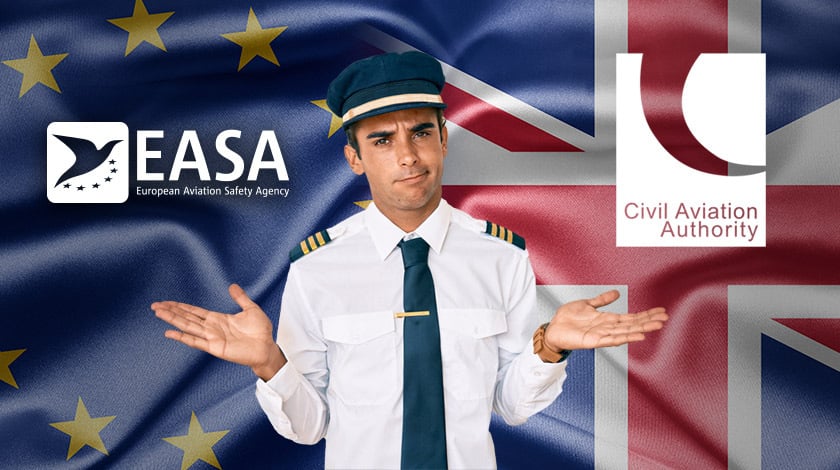Photo: BAA Training
Reading Time: 3 minutesBefore Brexit, training to become a pilot meant that all UK and EU pilot licences were being issued under the EASA (European Aviation Safety Agency) authority. It allowed pilots with UK licences to fly for both – the UK and European airlines. However, after Brexit, many questions started arising regarding the impact the UK leaving EASA had on pilot training and licence issuance.
The UK leaving EASA
When the UK left the EU on 31 December 2020, it also left EASA. On 1 January 2021, all UK-issued EASA licences became the UK only, and the UK CAA (Civil Aviation Authority) was proclaimed the sole Authority.
What does it mean? It means that the pilots who received their licences before that date by the UK CAA could no longer exercise the EASA privileges. In contrast, licences issued by another EASA member state by the end of 2020 kept granting these privileges but deprived their holders of the right to operate UK-registered aircraft.
Obtaining an EASA licence based on a UK CAA licence
It was possible to transfer a UK CAA-issued licence to another EASA member state up until the end of 2020. Thousands of professional pilots used this opportunity and transferred their EASA UK part FCL licences to an EU country (according to some sources, Austria was topping the list).
In addition, students who started their course in a UK-approved ATO before 1 January 2021 had a possibility, before that date, to transfer their training to a training organisation under the oversight of an EASA member state.
Obtaining a UK licence based on an EASA licence
EASA licence holders wishing to gain UK licences can do it by 1 January 2023. After this date, the UK will officially stop accepting EASA licences.
According to the UK CAA website, „From 1 January 2023, the UK will no longer be able to recognise EASA-issued certificates, approvals and licences for the operations and/or maintenance of UK registered aircraft. The CAA is encouraging holders of EASA approvals and personnel licences to begin the process of obtaining their UK equivalents now by applying to the CAA as soon as possible.“
Benefits of an EASA licence
Some of the most significant advantages of acquiring an EASA pilot licence may happen to be the cost of training and a broader spectrum of job opportunities.
While in the UK, the ATPL Integrated typically costs over £110-120k, in the EU, the price is considerably lower. Also, far more EU-registered commercial aircraft exist than G-registered. Leaving aside who is or isn’t recruiting, statistically, the chances of getting a job are higher.
So which one to choose – UK CAA or EASA?
The most accurate answer to this is probably „it depends.“ Ask yourself questions: „Where do I have the right to live and work?“, „Where do I want to be based during my career?“, „What airlines am I interested in working for?“
If your aim is a UK-based airline, such as easyJet or British Airways, you will need a UK CAA-issued licence. If you wish to fly for an airline registered in an EU Member State, such as Wizz Air, Vueling or easyJet, you will require an EASA licence (although some easyJet’s operations require a UK CAA licence).
BAA Training issues certificates of training that are accepted in all EASA member states. With it, you can reach out to the relevant National Aviation Authority (NAA) to acquire a pilot licence.
In conclusion, remember that you can always convert your licence if you get a job proposal elsewhere. It is because EASA and UK are both ICAO licences. So happy training and later on – happy flying with whichever licence you get!

